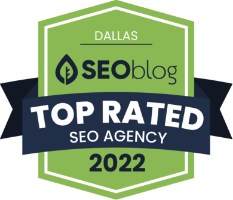
All Blogs,Design Insights,Digital Marketing, - September 02, 2021
The Ultimate Guide to Landing Pages
Expert Tips For The Ultimate Guide to Landing Pages
Every website owner needs landing pages to convert the traffic coming in from ads or call-to-action buttons. Once they are on a landing page, individual users may convert to leads or customers. Therefore, landing pages are an integral part of your business’s digital marketing strategy. This landing page guide will show you how to go about converting traffic to your website into customers.
What Is a Landing Page?
A landing page is a web page intended to convert general visitors into leads. Its preparation starts during the website design process with the inclusion of lead forms. Visitors who opt to fill the forms provide contact information, usually email addresses.
The Purpose of a Landing Page
A website has many sections, including the “about us” and “home” pages. These other pages have distractions such as competing links, navigation, and other options. So why would you need a special page with a form to fill out?
With a landing page, you can direct visitors to precisely where you want them to go. In short, the purpose of a landing page is to convert leads into customers.
Landing Page Best Practices
Landing page design is a precise craft that involves specific steps and elements known as landing page best practices. Look at each one of them in greater detail below:
- Write a Headline With Clear Benefits
As part of your landing page strategy, you should aim to reduce the bounce rate as much as possible. That means showing visitors the benefit of signing up within the first few seconds. Write a headline with clear benefits since that’s the first thing visitors will see as soon as they “land” on that page.
- Write Captivating Copy
Landing page optimization is concerned with clear, concise content that guides visitors to complete the action. You should write content from a second-person perspective with words such as “you” and “your.” A perfect line should go hand in hand with captivating words to support your call to action.
- Choose an Appropriate Image
Every landing page should have an image that represents the target audience. In addition, it should convey how visitors will feel after receiving the offer. You may select several images and choose the most appropriate one after split testing.
- Place the Lead Form Above the Fold
As part of your landing page optimization best practices, put the lead form in the most accessible location. The visitors shouldn’t have to scan the page to see the form. Instead, they should see the form or a connecting anchor link soon after hitting the page.
- Add a Strong, Standout Call-to-Action
A landing page should have a strong call-to-action (CTA) to encourage conversion. Use color contrasting page elements to make your CTA button stand out. Also, clearly state what you expect visitors to do using an action verb like “get it now,” “download,” “purchase,” or “submit.”
- Request for Specific Information
Every landing page guide you read will advise you to ask for specific information about your lead and nothing more. That will depend on how much the customer knows you, the position in their buyer’s journey, and the level of trust they have for you. If it is a new lead, an email address and a name are enough.
- Make a Relevant Offer
Your landing page is an integral part of your visitor’s journey to purchasing your product or service. Therefore, make an offer in exchange for getting the lead’s personal information. The offer should be compelling enough to extract contact information from a visitor and relevant to the business.
For example, you may offer “10 Benefits of Laptops in Business” because your ultimate intention is to sell a business laptop to the lead. However, an offer about printers will only direct the lead on a completely different path.
- Remove Navigation Features
The purpose of a landing page is to convert visitors into leads – period. Competing links such as those to other pages within the website can only be a distraction. Ask your web design agency to remove navigation features and other links that could sway visitors to the main objective – converting them into leads and customers.
- Optimize for Search
As part of your landing page optimization best practices, you should include keywords that make it rank highly on search engine results pages (SERPs). That applies to organic and paid search via Google Ads. It is better than relying solely on social media, email, and other digital marketing methods.
- Build a Responsive Page
Every page on your website, including the landing page, should be responsive to different customer viewing experiences. The focus of website design should be to make the entire landing page readable on mobile devices. Consequently, visitors should be able to see the lead form to convert.
- Include a “Thank You” Page
You should have a page where you redirect your customers soon after filling the lead form. It may contain a straightforward “thank you” message or an offer you had promised (like a download). The page’s purpose is to interest your lead beyond the relevant content and thank them for their interest in signing up.
Landing Page Design Prerequisites
Landing page design is a combination of creativity, attractive pictures, colors, functionality, and direction. Pay attention to the:
- Landing page structure includes headlines, relevant images, lead form, CTA, copy, and description.
- Landing page layout, which should have the most important information on top. You should also perform a blink test, use white space, write short paragraphs with bullets, and ensure visual patterns flow to them.
- Landing page colors, which should rhyme with the rest of your website color. It should make your brand immediately recognizable.
- Landing page images, which should be relevant to the information on the page. It should set the tone of the visitor’s entire experience from beginning to end.
- Call-to-action (CTA) directs visitors on what you want them to do. It should have a large button with vibrant, contrasting colors, less than five words, surrounded by white space, and where the reader’s eyes are likely to be.
Conclusion
With this landing page guide, you should craft highly converting pages that compel visitors to provide contact information. Of course, it would help if you worked with the right web design agency and content writers to implement suggestions on the checklist above.












